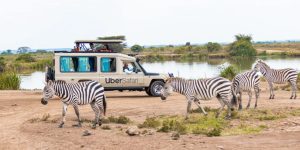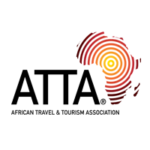The Mount Kilimanjaro hiking adventure is a bucket-list Discovery Journeys expedition for adventurers and nature lovers. Mount Kilimanjaro is Africa’s highest peak, standing 5,895 meters above sea level. This majestic mountain offers a unique hiking adventure because of its snow-capped summit.
Today’s guide takes you through the key steps in preparing for a successful Mount Kilimanjaro hiking adventure.
Choosing the Right Hiking Route
Mount Kilimanjaro has several routes, each with its beauty and challenges. Choosing the right one depends on your fitness level, time available, and preferences and sets the tone for your Mount Kilimanjaro hiking adventure.
Below are some of the routes you can opt for.
Marangu Route
The Marangu route is the easiest path with hut accommodations. It, however, has rapid ascents, making it less favorable for acclimatization.
Machame Route
The Machame route is longer, taking six to seven days. It is popular for its impressive scenery and is ideal for acclimatization. This makes it the most preferred choice for Mount Kilimanjaro hiking adventures.
Lemosho Route
Lemosho is among the newest Mount Kilimanjaro Hiking routes. It has impressive scenery with better acclimatization, just like the Machame route. Being new, it is less crowded and therefore offers exclusive hiking experiences.
Rongai Route
The Rongai Route is drier and ideal for hiking the mountain in the wet season. It has gentle slopes and a quiet path offering exclusive hiking journeys.
Physical Preparation
The Mount Kilimanjaro Hike requires no technical hiking experience but can be physically demanding. It takes a couple of days of walking to and from the summit. The mountain also has a varying altitude at different zones, which affects your body.
It is recommended to start your training at least two to three months before the hike. This training includes swimming, cycling, running, squats, and hiking.
Cold Water Immersion is recommended to train your body for colder environments. You can also hike to higher altitudes to familiarize your body to avoid altitude sickness.
Packing List
A successful Mount Kilimanjaro hiking adventure requires one to pack the right gear. These range from clothing, footwear, and other accessories.
We recommend moisture-wicking base layers that easily draw sweat from your skin. These can be supplemented by insulating cloth layers, waterproof clothing, plus a warm jacket. Hand gloves, neck gaiters, waterproof hiking shoes, and woolen socks are also essential.
A quality sleeping bag with sub-zero temperatures is important. There are sleeping bags for hire, but they may not be as comfortable as you prefer. It is better to bring your own for extra comfort.
Other extras include sunscreen, hats, extra camera batteries, power banks, and any other personal preferred items.
Hiking with a Guide
Mount Kilimanjaro hiking adventure is only possible with a registered Tour Operator. Several registered and licensed tour operators offer hiking packages to the summit. Hiking quotes include food, hiking fees, porters, drinking water, and other essentials.
We work directly with well-experienced guides who have hiked the mountain for several years. They know the best path to use and set a manageable pace that is user-friendly to all hikers. Our guides and porters help monitor your health and assist in navigating the touch sections of the mountains.
Porters are the most underrated part of the hiking experience. They carry most of your luggage, but it is advisable to have a small backpack with the essentials you require. These can include snacks, extra clothing, water, and personal medication. Ensure to tip your porters and guide at the end of the hike as a sign of gratitude. Tipping is part of Tanzania’s safari culture and is highly recommended.
Altitude Sickness
Altitude sickness can hinder your Mount Kilimanjaro Hiking adventure. It is advised to hike at a slower pace as your body acclimatizes to the mountain environment. Most Kilimanjaro hiking routes follow the “climb high, sleep low” principle. This enables your body to adjust to lower oxygen levels as you ascend to high mountain altitudes.
Pay attention to your body’s reaction and inform your guide immediately. Any symptoms like nausea, headache, and dizziness are signs of altitude sickness. These can affect your hiking adventure if not tended to early. Ensure to eat regularly, move slowly, and stay hydrated during the hike.
Diamox is among the notable altitude medications you can use. Descending the mountain, however, remains the safest option if you feel unwell.
The daily Kilimanjaro Hiking routine
Hiking Africa’s tallest mountain follows a structured routine with an early morning start. This begins with preparations for the day’s hike and breakfast. A briefing is done by the guides to prepare you for what is ahead of the adventure.
Hiking takes 4 to 6 hours daily, with en route stopovers for lunch and photography at places of interest. Mount Kilimanjaro has different vegetation zones, starting with the lush rainforests. These slowly ascend into other vegetation zones with rocky moorlands and eventually the snow-capped peaks. Hiking through these vegetation zones enables you to discover the wildlife species that inhabit the mountains.
Each day spent brings you closer to the summit, which has impressive glacial features. The higher mountain slopes offer great scenic views of the surrounding landscapes of the Tanzania wilderness.
The hiking teams have well-experienced cooks who prepare hot, simple meals once you reach the camp. Dining under the stars adds to the magic of your Mount Kilimanjaro hiking adventure.
The Summit Experience
Reaching the summit is everyone’s dream and ultimate goal. It is, however, the most challenging part of the hiking experience. Ascending the summit starts around midnight, going over a steep slope in intense coldness. Mental strength and persistence become the most important aspect of this section of the hike.
The goal usually is to reach the summit by sunrise. Uhuru, the mountain’s highest peak, is the final push. You first go through the Stella point, which is the first landmark of the summit. While at Uhuru Peak, you enjoy panoramic views of the continent, celebrate the successful ascent, and begin your descent.
The descent is tough on your knees and best handled by slowing down where necessary. Your first stop is at a lower Camp where you rest after a long adventure from the summit.
The descending experience
Descending the mountain takes a couple of days, and it is manageable. You get a sense of achievement and fulfillment after reaching the summit with a lasting adventure experience. Once you return to the mountain base you are awarded certificates of participation for your successful hike.
The Mount Kilimanjaro hiking adventure is remarkable as you conquer Africa’s highest peak and challenge your limits. Memories from the impressive views and the bond created with fellow hikers last forever.
Discovery Journeys to the Roof of Africa is an unforgettable adventure through diverse ecosystems and your physical limits. It becomes a blend of adventure, personal growth, and incredible experience with the right preparation.
Mount Kilimanjaro delivers whether you are inspired by the allure of standing at Africa’s highest point or seeking an epic Discovery Journeys experience. It is best done as a stand-alone but hikers with mountain climbing experiences can add other adventures to Serengeti National Park. Those interested in primate trekking can visit Uganda and Rwanda.











